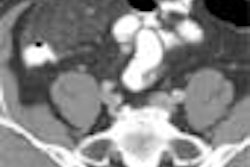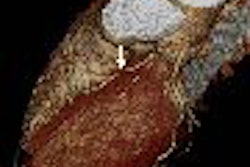Dear CT Insider,
The reliable assessment of plaque morphology with CT is an elusive and long-sought goal. Several groups have attempted to differentiate soft, fibrous, and calcified coronary artery deposits on the basis of attenuation, with varying degrees of success. Others have measured Hounsfield units to determine the mineral composition of blood.
Now researchers from the Mayo Clinic in Rochester, MN, have produced intriguing results with the aid of dual-energy CT technology, distinguishing iron from calcium deposits in a plaque model, and potentially enabling the differentiation of hemorrhagic from calcific plaque.
Unstable plaque, the kind more likely to trigger a fatal clot, is characterized by intraplaque hemorrhage and subsequent iron deposits, which may be detectable with dual-energy CT. For more on the Mayo experiment, just click on our Insider Exclusive story, published for CT Digital Community subscribers before it is made available to our other members.
In other news, researchers are relying on CT data to determine the portion of lung function impairment that is attributable to patients' asbestos exposure versus their smoking-related emphysema.
A group from New York has been studying omental infarction with MDCT, and using the knowledge to prevent needless intervention in adults and children with the condition. Also apropos of kids, youngsters in Colorado may undergo fewer nonessential CT scans if the risks are quietly explained to their parents, according to a new study led by Dr. David Larson.
Finally, a team from University Hospital Dusseldorf in Germany has added up the CT radiation dose from a typical series of stroke exams -- and found that small adjustments in the protocol can make a big difference. See what Dr. Matthias Cohnen and colleagues learned by clicking here.




















